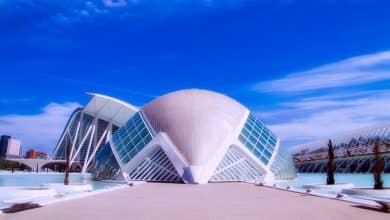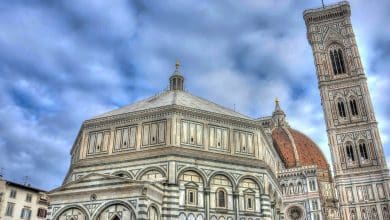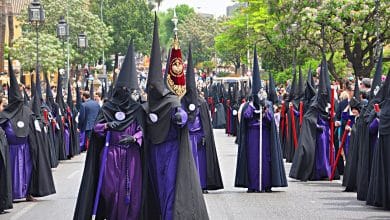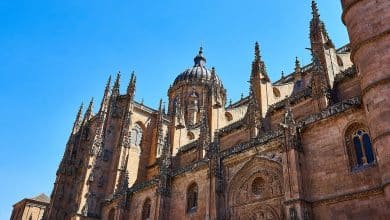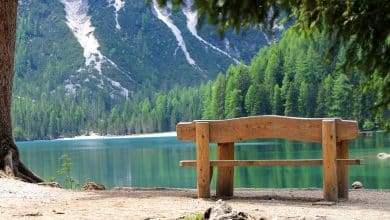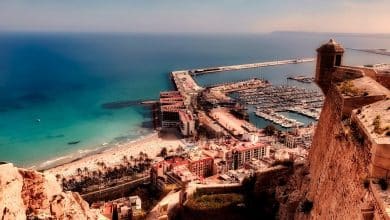El Retiro Park Attraction In Madrid Spain

More than 15,000 trees make up El Retiro Park, covering more than 125 hectares and having more than a quarter of a million plants. Many noteworthy monuments and gardens can be found here, including Jardn Vivaces, the Jardines del Arquitecto Herrero Palacios, the Rosaleda rose garden, and the Parterre Francés (believed to be Madrid’s oldest tree), which is home to an over 400-year-old Mexican pine.
Additionally, the park is popular with locals who take a stroll, participate in a sport, see an exhibition, or bring their children to see a puppet play. Among the attractions in the park are the Velázquez Palace and the Glass Palace, both of which are being used as exhibition galleries by the Reina Sofa Museum. It was erected in 1887 to store exotic plants for an exposition in the Philippines and is a stunning glass pavilion. As far as cast-iron architecture goes in Spain, this is one of the best.
Sculptures and fountains abound at El Retiro, including the spectacular Alfonso XII Monument, which stands guard over the lake and opened its observation deck to the public in 2018 for breathtaking views. The monument of the Fallen Angel, the only sculpture in the world devoted to the devil, stands 666 meters above sea level in the Rose Garden. The Galápagos Fountain, erected in honor of Princess Isabella II at the time, the Teatro de There’s, Europe’s only puppet theater, and the large area known as the Reservado de Fernando VII, which King Ferdinand VII decided to keep for himself and his family when the rest of the park was opened to the public, are all worth a visit as well. The king’s “whims,” small buildings or monuments designed as little retreats for the monarchs to rest and relax, can be found in this area of El Retiro, between Calle O’Donnell and Calle Menéndez Pelayo: the Casa del Pescador, the Montaa Artificial, and the Casa del Contrabandista, which now includes Florida Park, a modern multi-purpose space devoted to leisure and catering that was once home to a nightclub.
You may rest or work out in this beautiful green environment.
El Retiro is a popular spot for rollerblading, long walks, and jogging for both residents and visitors. It’s a hit with kids of all ages because of the abundance of playgrounds of all sizes.
Along with La Chopera municipal sports center, Eugenio Trias public library as well as Casa de Vacas cultural center, the park is home to Madrid’s oldest tree, according to local legend. The Ahuehuete (or Montezuma cypress) is a rare foreign tree that doesn’t shed its leaves each year and has been present in the area since before 1630. As one of the few trees to survive the Spanish War of Independence against France, it was used as cannon support by Napoleon’s men when their park became the army’s headquarters.
If you’d want to explore the park on two wheels, there are several places nearby where you may do just that. Several outdoor cafés and stalls serve food and drinks in El Retiro’s parks.
There are several popular events hosted in the park each year, including the Book Fair and the San Isidro fireworks show.
A UNESCO World Heritage Site
El Retiro Park and Paseo del Prado will be inscribed as UNESCO World Heritage Sites on July 25, 2021. An urban development initiative in Madrid dubbed the Landscape of Light recognizes the necessity of bringing nature, culture, and science together in an urban environment. Madrid became Europe’s first and only self-sustaining capital city because of this partnership in the 16th century.
UNESCO has recognized this as a unique form of avant-garde urban design that has achieved significance beyond Spain’s boundaries, reflecting a utopian vision of a future society. All of this lends the Landscape of Light its remarkable global worth. For the enjoyment and education of city dwellers in close proximity to nature, this urban cultural environment is rich, diversified, ever-evolving, and dynamic.
What are the best parts of Madrid’s El Retiro Park?
Crystal Palace, a stunning glass pavilion and conservatory, is a well-known landmark of El Retiro Park at the top of the attractions in Madrid. An impressive colonnade and monument to Alfonso XII can be seen near the park’s north entrance, which features Retiro Pond. The Fountain of the Fallen Angel, a 1922 sculpture in a 20th-century rose garden, is one of several artworks in the garden.
You’ll discover 18th-century sculptures of several of the Spanish rulers at the Paseo de la Argentina, better known as the Statue Walk. El Retiro Park’s other museums include the Salón de Reinos and the Casón del Buen Retiro, in addition to the Crystal Palace. Additionally, there are several playgrounds for children and a variety of sports courts and fitness equipment for adults.
How did El Retiro Park in Madrid come to be?
Until the late nineteenth century, Madrid’s Parque del Buen Retiro belonged solely to the Spanish monarchy. The park’s beginnings may be traced back to 1505 when the royal family erected a refuge on the present-day site. The royal added gardens, opulent structures, and the large pond, Estanque del Retiro, to their park throughout the years.
Following the death of King Phillip IV in 1665, El Retiro Park was neglected for a period of time. The completely renovated park was reopened to the public in 1767, and the Spanish monarchs continued to support additions and beautifications. During the reign of Queen Isabella II, El Retiro continued to expand dramatically, with numerous fruit trees and shade trees, gardens, and landscapes being constructed. After Queen Isabella’s fall in 1868, the park was given to the people as a public gift.
When visiting Madrid’s El Retiro Park, it’s a good idea to know:
Every month of the year, El Retiro Park hosts a variety of events and celebrations, from fireworks to book fairs to concerts and other live entertainment. The El Retiro summer music series, which runs from the end of May until the beginning of October, is a local favorite.
As a free attraction in Madrid, El Retiro Park is a popular choice for those on a tight budget. Additional park activities, such as renting bicycles, pedal boats, and horse-drawn carriages, may be had for a modest charge. El Retiro Park has a number of cafés and kiosks where you can have a snack or a small meal while you’re out enjoying the park. Evening sunsets over Madrid are highly recommended by locals who frequent the park.
Madrid’s Retiro Park
Located in Madrid, Spain, in Plaza de la Independencia, 7.
It is open from 6 PM to 9 PM, Monday through Friday, and from 10 AM to 2 PM, Saturday and Sunday.
A phone number is: +34 914 0087 40
Other Things To Do Near The Park:
House of Cows – La Casa de Vacas
The Casa de Vacas, which was initially built in 1874 as a dairy farm and milk trading office, is today home to a variety of art exhibitions, concerts, and even theatrical performances. Pavillón, a well-known party hall in Madrid during the beginning of the 20th century, was turned into a cultural center following a fire. Visitors to this magnificent facility are welcome Monday through Sunday from 9 AM to 10 PM.
Fisherman’s House – La Casita del Pescador
If you are visiting Spain’s touristy area make sure you visit this location too! It is located in Madrid’s El Retiro Park’s northwest corner, the Casita del Pescador is a tiny ancient home. After the French invasion, Fernando VII had this mansion reconstructed in the early nineteenth century. Restored to its former glory, the “Salón Persa” and the “Casita del Pescador” were known as “Los Caprichos” (The Caprices). Isidro González Velázquez constructed the structure so that the king and his companions might rest while fishing.
Statue of the Fallen Angel – La Estatua del Ángel Caído
The Monument to the Angel Cado Ricardo Bellver and Francisco Jareo, two of Madrid’s most famous sculptors, created it in 1877. A Chinese porcelain pedestal, which was shattered during the independence war, stands atop this spectacular monument. El Retiro Park in Madrid’s El Retiro Park is famous for a monument depicting Lucifer’s deportation to heaven.
Statue Walk – El Paseo de las Estatuas
Spain’s kings were immortalized by Fernando VII, who commissioned this walkway, known as Paseo de Argentina, in local parlance. A little-known fact is that some of the sculptures sculpted by the court painters Felipe de Castro and Domenico Olivieri never made it to their final destination and ended up in places like Puerta de Toledo, El Retiro, and Plaza de Oriente.
The Rose Garden – La Rosaleda
The elliptical La Rosaleda has four entrances and is bordered by cypress trees. The mayor of Madrid, Carlos Prat, commissioned Cecilio Rodrguez to create it, inspired by the major European towns. Cecilio Rodrguez was inspired by the Gardens of Bologna in Paris, which he visited while in France and returned with 12,000 roses from more than 350 different types.
Alfonso XII Monument
This hemicycle on the east side of the lake is El Retiro Park’s greatest monument. An opulent memorial to her late husband, Mara Cristina, the widow of Alfonso, was commissioned in 1875. The Alfonso XII on a horse monument is a symbol of independence, development, and peace. The Montserrat Army, as well as art, science, and technology, are all represented on the inside face.
In honor of Jacinto Benavente, the Nobel laureate Victorio Macho erected this memorial in 1962 immediately outside the flowerbed. Luca de Tena and other authors proposed the idea, and it was made possible in part by campaigns run by the well-known Spanish newspapers ABC and La Vanguardia, to name just a few. At the base of the statue, Jacinto Benavente’s visage is shown as a lady holding a mask from the stage and a book.
The Royal Observatory of Madrid – El Real Observatorio de Madrid
The Real Observatorio de Madrid was established in 1790 by King Carlos III with the goal of consolidating Spanish naval supremacy. The famous edifice, designed by Juan de Villanueva, was demolished during the independence war against France. Today, we are able to see a collection of precision timepieces, a bronze mirror constructed by W. Herschel, and a library of rare books. From Friday to Sunday, admission to the observatory and its three chambers is simply 5 euros.
The Crystal Palace – El Palacio de Cristal
An ancient edifice from 1887, the Palacio de Cristal, exhibits modern art shows featuring its vaulted glass roof. It is situated close to a man-made lake and is made of metals and glass. In addition, some of the most significant events in Spanish history have occurred within its walls, including the nomination of President Azaa.
The Big Pond
The Big Pond has been in the hands of the city of Madrid since 1868 when it became Crown property. Rowing and canoeing contests may be held thanks to its pier, which is one of its most distinctive characteristics. Furthermore, the Egyptian Fountain and the Alfonso XII monument are both located on the lake’s north and south banks.
Velázquez Palace – El Palacio de Velázquez
The Palacio de Velázquez, built-in 1833 close to the Palacio de Cristal, was supported by Sofia, the previous queen of Spain. The metal construction, vaults, and transparent ceilings, as well as the building’s natural sunlight, make it an ideal place to take in the art. Monographic art shows by different 1900 painters are held in this building, which was inspired by London’s Crystal Palace. As a bonus for art enthusiasts, its admission is free, and it is open from 10 AM to 10 PM.
Getting to El Retiro Park by train
The public transportation system in Madrid is efficient and reliable, so getting around town is a cinch. How you travel about will depend on the kind of transportation you pick. The metro is one of our favorite modes of public transport because of the frequency and speed with which it operates.
Which station is nearest to El Retiro Park?
If you’re taking the metro, there are a few stations you might want to stop at… Metro line 2’s Retiro station draws up just outside the park. You may also take line 9 to Ibiza and walk inside the park. Also nearby is the metro station on line 1 called Estación del Arte. At Conde de Casal, if you’re near a line 6 service, get off.
Depending on where you’re coming from, you’ll be sent to a different station. To go to any of the aforementioned locations, board a train on one of the following lines: 1, 2, 6, or 9. Find a service that can switch you to the line you need if you can’t get on one of these directly. We recommend walking to the park if you’re within a half-hour walk; it’s the finest way to explore the city.
El Retiro Park: A Day in the Park
El Retiro is a hive of activity at all times. Everyone can find a place to relax and unwind here, whether it’s on a bright Saturday afternoon or a mid-week stroll among the city’s ancient sites. To make the most of your time at El Retiro Park, here are some of the best activities.
In the Lake
El Retiro’s lake is one of Madrid’s most attractive sights. Rowboats may be rented for a few euros on the calm waters of the lake, which are surrounded by enormous columns and sculptures.At sunset, look out across the lake and see how the peachy sky reflects on the water.
The Alfonso XII Monument
Yes, we were referring to those statues. Alfonso’s XII Monument, which has been standing since 1922, is one of them. The tower in the middle of a semicircle of ornate columns is a looming presence that cannot be ignored. It’s hard to miss King Alfonso, who’s perched atop this 200-foot-tall tower.
Those who go to the tower’s foot will be rewarded with stunning views of Madrid, especially the Salamanca district, the Barrio de las Letras and Gran Va.
Palace of Crystal
The Crystal Palace at El Retiro is a sight to behold and a must-see for anybody interested in architecture or the arts. Located in a densely forested area of the park, the Palacio de Cristal was erected in 1887 and features its own tiny lake. It was originally intended to be used as a greenhouse, which is what it was. We’d say it’s a pretty amazing one, too. Exhibits in this one-of-a-kind area are enhanced even further by the usage of the stunning glass structure.
The Velázquez Palace
It’s just a few blocks away from Velázquez Palace, which was built in the 1880s. Velázquez was designed by the same architect who constructed the Crystal Palace. Therefore, it’s a good idea to see both of these structures simultaneously if you have the chance.
This stunning structure has a glass top, but the brick and tile walls give it a more solid feel. The Ministry of Culture now owns Velázquez Palace, where temporary exhibitions for the Reina Sofa Museum are held. These two glistening mansions are open to the public and a must-see for every art connoisseur in town.
The Argentina Avenue
You can understand why Paseo de la Argentina is also known as Paseo del Estatuas. Statues of Spanish kings line this long length. A lovely area to take a stroll and the best way to access El Retiro. To get to El Retiro Lake, walk through Puerta de Espana, the 19th-century gate with an ornate 19th-century design.
Along the Paseo del Prado, you’ll see 94 sculptures of Spanish monarchs, including Fernando IV and Carlos II. On each side of Paseo de la Argentina are manicured lawns and flowerbeds, so don’t be afraid to venture off the beaten path.
Playgrounds
El Retiro Park is a great place to take the kids if you’re in town. There are 11 play spaces for children of different ages throughout the park. It doesn’t matter if you’re in Madrid with a toddler or two older kids; each playground has been developed to cater to a certain age group.
Garden of Roses
Even if you’re not in Madrid in the spring, the Rose Garden at El Retiro is worth seeing at any time of year. Every year, more than 4,000 brightly colored roses blossom in a range of shapes and sizes. Other highlights include green arches, a fountain, and benches scattered around the Rose Garden, where you may take a moment to reflect.
Gardening on the Cecilio Rodriguez Estate
There is no such thing as an overabundance of beautifully tended gardens. There are several very lovely ones at El Retiro Park. The Gardens of Cecilio Rodriquez, or Los Jardines de Cecilio Rodriguez, are only one of the park’s exquisite planted areas. They have rows of low hedges, fountains, and smooth checkerboard paths.
Additionally, these grounds have a pavilion building where guests may enjoy events, films, and temporary exhibitions.
The Fallen Angel’s Fountain
Madrid may be the only city in the world with a monument dedicated to the devil, according to legend. Here at El Retiro Park, you may view the Fountain of the Fallen Angel. Located 666 meters above sea level, the fountain symbolizes Lucifer’s terrible fall from heaven. A classic line from John Milton’s Paradise Lost served as inspiration for this scenario.
The statue, which is regarded as one of Ricardo Bellver’s finest works, was created by the artist. The bronze statue was originally created by Bellver for the World’s Fair. On being bought in 1885, it was given to the city of Madrid by the Museo del Prado and placed on its pillar. Try it out and give your own opinion on this innovation.
The History of El Retiro Park and Other Interesting Information
Like many of Madrid’s parks, El Retiro began life as a royal park. Translated as “retirement,” El Retiro translates to “Park of Pleasant Retreat” in English, which the park is called by its full name. Having a better understanding of the place’s history will help make your visit more enjoyable.
Constructing the Park
The Count-Duke of Olivares chose to give some of his own territories to King Philip IV in the 17th century.. El Retiro, as we know it now, was once located here. Due to its exceptional location on the outskirts of the city, it was much sought for. As the park currently sits close to the city’s center, Madrid had expanded significantly since the 17th century when it was first built.
The same Count-Duke of Olivares established a park on the same plot of land ten years after he gave it. With Cosimo Lotti on board, the project’s landscape architect designed the chapels, winding walkways, and some of the most spectacular statues that still stand today.
Greenery that belongs to the king
Royals and their guests were regulars at El Retiro as soon as it was completed. The kings and queens of Spain used the park as a private area for many centuries, from performances and operas to warm-weather walks.
The public is welcome.
To maintain the gardens in order, King Charles III established a set of guidelines for tidiness in the park. The King created an agricultural school on the grounds of the park, which he dedicated to agriculture.
Spain’s King Ferdinand VII attempted to restore El Retiro to its former glory after the Peninsular War. The Fisherman’s Cottage, or Casita del Pescador, was one of the additional additions he made.
Ownership of El Retiro was transferred to the Madrid City Council during the 1868 revolution. The Crystal Palace and the Palace of Velázquez, two of the park’s most magnificent new additions, were constructed.
And that’s all there is to it. Since then, the El Retiro as we know it today has been a favorite for Madrid residents and tourists alike. When you’re in town, join the people at El Retiro to relax and soak up the sun. It’s possible that this will become one of your new go-to spots.
El Retiro Park’s Best Restaurants and Bars
At order to make the most of your time in El Retiro Park — and who wouldn’t? — it’s important to bring food and drink with you. Then you’re in for a treat, as well! El Retiro and its environs are brimming with excellent cafés, restaurants, and pubs. Here are a few of the very best.
Here are some of the best places to eat, drink, and unwind in El Retiro. It is possible to find wonderful sites outside of the park as well, so don’t be afraid to look about.
With a view of the lake and Alfonso XII’s monument, Bar Mirador and Las Estatuas both have wide outdoor terraces where you can enjoy hot, cold, and alcoholic beverages as well as light fare like sandwiches and salads.
As with Terraza El Ancla, Terraza El Ancla is another wonderful option for a cup of coffee, ice cream, or beer in the shade overlooking the lake.
Located near the Florida Retiro Rose Garden is Bar Mirador La Rosaleda, another laid-back patio spot.
This is a more significant place to stop. Florida Retiro is open for lunch and dinner, serving wonderful cuisine and tantalizing drinks in a relaxed setting with lots of room both inside and out. Book a seat in the à la carte restaurant or enjoy tapas and live flamenco. Do you feel like a cocktail? Enjoy the city’s greatest views from the patio.
Hours of Operation and Tickets
To visit El Retiro, which is a public park, you don’t have to pay. However, this is a gated park, which means that visitors must adhere to the park’s established opening and closing times. As a result, the area is protected against graffiti and other problems after hours.
El Retiro is open from 6:00 AM until 0:00 AM daily from April through September. The park is open from 6 AM to 2 AM on fall and winter weekends. That way, you can always drop by for a cup of coffee in the morning or a glass of wine at night.
Whatever brings you to El Retiro Park, we’re confident you’ll be charmed by this charming part of Madrid. Whatever the case may be, there is always something to do.
Traveling to the location via Madrid’s train
Madrid may easily be reached by train because of the reliable service provided by Renfe, Spain’s national railway corporation. On the quickest AVE trains, you can go from Barcelona to Madrid in 2 hours 30 minutes, Valencia to Madrid in 1 hour 40 minutes, and Seville to Madrid in 2 hours 30 minutes. Trains to Madrid arrive at Madrid Atocha or Madrid Chamartn, the city’s two main stations; if you arrive at the former, keep an eye out for the botanical garden!
Are you interested in learning more about train travel in Spain? Take a look at our comprehensive guide on riding the rails in Spain for all the information you need. On our Renfe website, you’ll learn all you need to know about Spain’s national rail company and how to get the best deals.

